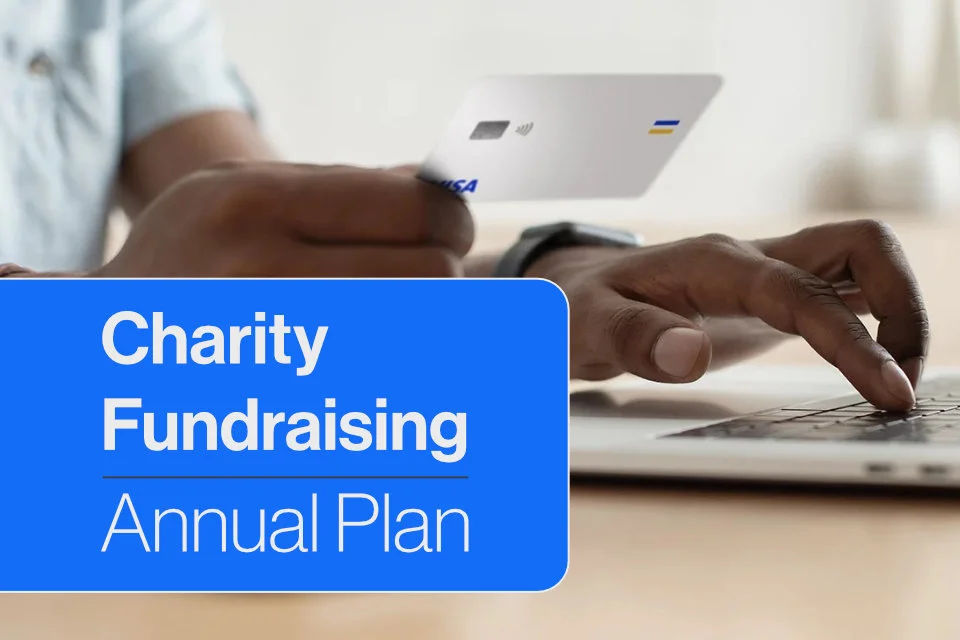As charities face new challenges and opportunities in 2025, adapting your fundraising strategy to stay ahead is more important than ever. By doing so, you can secure sustainable income and connect with supporters in ways that resonate with them.
Creating a well-thought-out annual fundraising plan is crucial for any UK charity looking to raise funds effectively. A strong plan doesn’t just help you raise money; it also builds lasting relationships with your supporters. In this guide, I’ll take you through the key steps to create a fundraising strategy that works in 2025, incorporating the latest trends and changes in fundraising.
An effective fundraising strategy acts as a roadmap for your charity. It outlines where the money will come from, who you’ll target, and how the funds will be used. A solid plan keeps you on track and ensures you’re not scrambling for donations when you need them the most.
Fundraising Trends in the UK (2024)
As we approach the end of 2024, UK charities have raised £14.5 billion, showing steady growth despite ongoing economic challenges. While digital donation platforms are becoming more popular, traditional methods like face-to-face interactions and event-based fundraising remain essential for success.
Key Insights for 2024: The Status of UK Fundraising
- 55% of charities met or exceeded their fundraising targets in 2023, but 29% did not – an increase of 7% from the previous year. This underscores the need for charities to adapt their strategies to shifting donor behaviours.
- Fewer charities are setting formal fundraising targets in 2024, offering the opportunity to create more flexible and strategic plans.
- Exceptional donations continue to be the main driver of income growth, with 44% of charities attributing success to large gifts. In addition, new fundraising activities and a stronger focus on the supporter experience have contributed to growth.
- Charities with diverse income streams, including grants, trusts, and legacies, are seeing better results than those relying primarily on grants, highlighting the importance of a balanced fundraising strategy.
Understanding the Fundraising Context in 2025
1. Statistics on Charitable Giving in the UK
- Charitable donations in 2024 reached £14.5 billion, reflecting ongoing donor engagement despite economic challenges. 77% of the UK population interacted with charities through donations, volunteering, or other support.
- The average donation remained at £20, with a growing interest in recurring donations and digital giving options.
While charitable giving remains strong, competition for donor attention continues to intensify. Charities need to refine their strategies to stand out and attract new supporters.
2. How Economic Trends Impact Charitable Giving
Economic uncertainty and cost-of-living pressures are affecting donor behaviour. Charities need to be adaptable, balancing short-term fundraising goals with long-term sustainability. To navigate these challenges, charities should emphasise flexible donation options, diversify income sources (e.g., corporate partnerships, endowment or legacies), and create transparent campaigns that resonate with donors.
Key Elements of a Winning Annual Fundraising Plan
1. Setting Clear Goals
Fundraising targets should be SMART: Specific, Measurable, Achievable, Relevant, and Time-bound. Clearly defined targets enable you to assess the success of your efforts and adjust as necessary. For example, your annual donation target could be £100,000, broken down into smaller monthly or quarterly targets. Aligning fundraising goals with your mission is key. If your charity’s mission is to support mental health programmes, aligning your fundraising goals with these specific projects will help engage supporters who are passionate about the cause.
2. Donor Analysis and Segmentation
A) Why Donor Segmentation Matters
Not all donors are the same and your fundraising strategy must reflect that. Segment your donors into groups like major donors, regular givers, and lapsed donors, and customise your communication to each group’s needs and preferences.
For instance, a strategy to engage major donors might focus on personal invitations to exclusive events, while a regular giving strategy could leverage email marketing and online donations.
B) Using Data to Optimise Your Approach
Keeping track of donor behaviour and preferences through a donor database is crucial. Tools like CRM systems can help track donations, identify trends and measure campaign success.
3. Diversifying Fundraising Streams
To ensure financial sustainability, charities need to incorporate various revenue streams. In 2025, it’s essential to balance traditional methods with newer, digital fundraising options. This could mean combining events like charity galas and challenge events with digital campaigns like crowdfunding or social media fundraising.
Popular Fundraising Methods in 2025:
- Peer-to-peer fundraising: Supporters raise funds on behalf of your charity.
- Text-to-donate: An easy, quick way for people to give through their phones.
- Online donations: Make sure your charity’s website is optimised for digital giving.
4. Budget Allocation and Resource Planning
Creating a realistic fundraising budget is a key part of your plan. Be sure to allocate funds to the most effective strategies while accounting for unexpected costs. Return on investment (ROI) is another critical metric for measuring the success of your fundraising activities. You want to know that every pound spent on a campaign is being put to good use.
- Fundraising expenditures should be tracked closely to ensure you’re not overspending.
- Set aside a contingency fund for unexpected challenges.
5. Timeline and Campaign Planning
To keep your charity’s fundraising efforts on track, developing a year-round fundraising calendar is fundamental. Make sure this calendar includes all major campaigns, events, and donor engagement activities. Whether it’s a charity walk or a crowdfunding drive, scheduling in advance will keep your team focused and organised.
Also, be mindful of seasonal giving trends. For example, many people are more generous during the month of Ramadan, around Christmas and in times of economic prosperity. Plan your fundraising activities around these windows of opportunity.
Integrating Digital Strategies for Fundraising Success
1. Using Social Media for Donor Engagement
Social media isn’t just for awareness – it’s a vital channel for fundraising. Platforms like Facebook, Instagram and LinkedIn can help you engage with existing supporters and potential donors. Consider using these channels to promote events, share stories, and provide updates on how donations are being used.
Tip: Use Google Ad Grants to boost your charity’s digital presence and drive traffic to your donation page.
2. Optimising Your Website for Donations
Your charity’s website should make donating as easy as possible. This includes optimising for mobile giving and ensuring your donation page is simple to navigate.
Fundraising platforms like JustGiving, LaunchGood or GiveBrite can help manage online donations while offering built-in analytics to track campaign performance.
3. Email Marketing and Automation Tools
Email marketing is another excellent strategy to nurture relationships with your donors. Use it to send thank-you notes, share success stories and keep donors updated on your progress. Automation tools can help you schedule these messages, so you stay top of mind without much effort.
4. Crowdfunding and Peer-to-Peer Fundraising
Crowdfunding platforms enable your charity to raise funds from a wide audience. Your supporters can share your campaign within their networks, helping you tap into their connections for donations. Peer-to-peer fundraising is an especially great strategy for community-based charities.
Understanding UK Fundraising Regulations
To ensure that your fundraising activities are ethical and legal, it’s fundamental to understand the regulations that govern charity fundraising in the UK. The Fundraising Regulator and Charity Commission guidelines help set standards for transparent and ethical fundraising.
GDPR Compliance is a must when handling donor data. Ensure your charity protects donor privacy and data in line with the law.
Measuring Success and Adapting Your Plan
To ensure your fundraising plan is effective, focus on these five key steps for measurement and improvement:
- Track Key Performance Indicators (KPIs): Monitor metrics like donor retention, conversion rates, average gift size, and cost per pound raised to gauge your campaign’s performance and efficiency.
- Gather Donor Feedback: Use surveys or interviews to understand donor experiences, focusing on ease of donation and alignment with their values. Use insights to guide future improvements.
- Conduct Regular Campaign Reviews: After each campaign, analyse outcomes to identify successes, challenges, and areas for improvement. Adjust strategies based on these findings.
- Use Analytics Tools: Use donor management platforms or analytics tools to track performance, including traffic sources and peak donation times.
- Adapt to Trends: Stay updated on donor behaviour and emerging trends, such as the rise of digital giving or shifts in event preferences, to keep your strategy relevant and effective.
When you focus on these actions, you’ll create a dynamic fundraising plan that evolves with new opportunities and challenges.
Case Studies: Successful Annual Fundraising Plans
Examples from small, medium, and large UK charities:
- Small Charity: The Youth Empowerment Fund ran a highly successful fundraising campaign through social media engagement and small donor drives, which resulted in a 25% increase in their yearly contributions. They implemented a clear, concise campaign with local influencers and highlighted the tangible impact of every donation.
- Medium Charity: Hope for the Homeless used a hybrid fundraising model, combining traditional gala events with digital fundraising. Their strategy included personalised email campaigns, a virtual auction, and social media-driven storytelling, which increased their donor retention rate by 30%.
- Large Charity: The National Cancer Research Foundation has long had an established annual fundraising strategy, but they recently adapted by adding interactive fundraising events like online fitness challenges. Their 2023 plan led to a record-breaking year, raising £2.5 million in donations due to their use of data analytics to optimise donor outreach and personalise communications.
Lessons learned and best practices:
- Successful fundraising relies on clear, consistent communication. Both small and large charities have found that maintaining transparency with donors about the impact of their contributions strengthens relationships.
- Donor engagement should include traditional and digital strategies to meet donors where they are. Charities that effectively combine both methods tend to have more diversified revenue streams.
- Data collection and analysis are critical. Charities that track donor behaviour and preferences can personalise campaigns, improving engagement and increasing donations.
Overcoming Challenges in Annual Fundraising Planning
Every fundraising strategy will encounter obstacles. Here are some common challenges and ways to address them:
- Donor Fatigue: Many charities face donor fatigue, where supporters become overwhelmed by constant requests for donations. Combat this by offering more engaging, value-driven campaigns that show donors exactly how their contributions make a difference. Segment your donor base so that you’re not over-saturating your communications and use creative campaigns to revive excitement.
- Economic Uncertainty: The economic climate plays a big role in how people allocate their disposable income. During difficult times, some donors may reduce their giving, while others may become more philanthropic. To manage this challenge, build a robust plan that includes short-term campaigns and long-term plans, like legacy giving, which can provide stability.
- Competition for Funds: With so many charities fighting for attention, standing out in a crowded field can be difficult. To overcome this challenge, focus on your unique value proposition – what makes your charity different – and build relationships with your supporters through storytelling and personalised communication.
- Short-Term Funding vs. Long-Term Goals: Charities often focus on immediate fundraising needs, which can detract from building sustainable income streams. It’s crucial to balance short-term campaigns (like events) with long-term strategies, such as major donor cultivation, grants and planned giving.
Future Trends in Fundraising Planning
As we move into 2025, several trends are shaping the future of charitable giving:
- Blockchain and Cryptocurrencies: As cryptocurrencies become more mainstream, blockchain-based donations offer transparency and security, making it an attractive option for tech-savvy donors.
- Artificial Intelligence (AI): AI will continue to revolutionise how charities understand donor behaviour, offering deeper insights and more customised outreach.
- Shifting Donor Demographics: Millennials and Gen Z are becoming an increasingly influential donor base. These groups tend to give online and expect transparency and accountability from the causes they support.
- Peer-to-Peer Fundraising: This model continues to rise in popularity, allowing supporters to fundraise on behalf of charities and tap into their networks.
My Final Thought
Building a successful annual fundraising plan requires a comprehensive approach, balancing traditional fundraising methods with innovative digital strategies. The future of charity fundraising lies in adapting to changing donor behaviours, leveraging technology, and staying focused on your mission. By setting clear goals, diversifying revenue streams, and using data to inform your decisions, you’ll be equipped to navigate challenges and maximise your fundraising efforts in 2025 and beyond.
Book your free consultation today if you’re ready to build your charity’s fundraising strategy or need more tips on improving your plan.
Stay Updated with the Latest Charity Insights
Sign up for our newsletter to receive valuable tips, updates, and exclusive offers to help your charity thrive.



